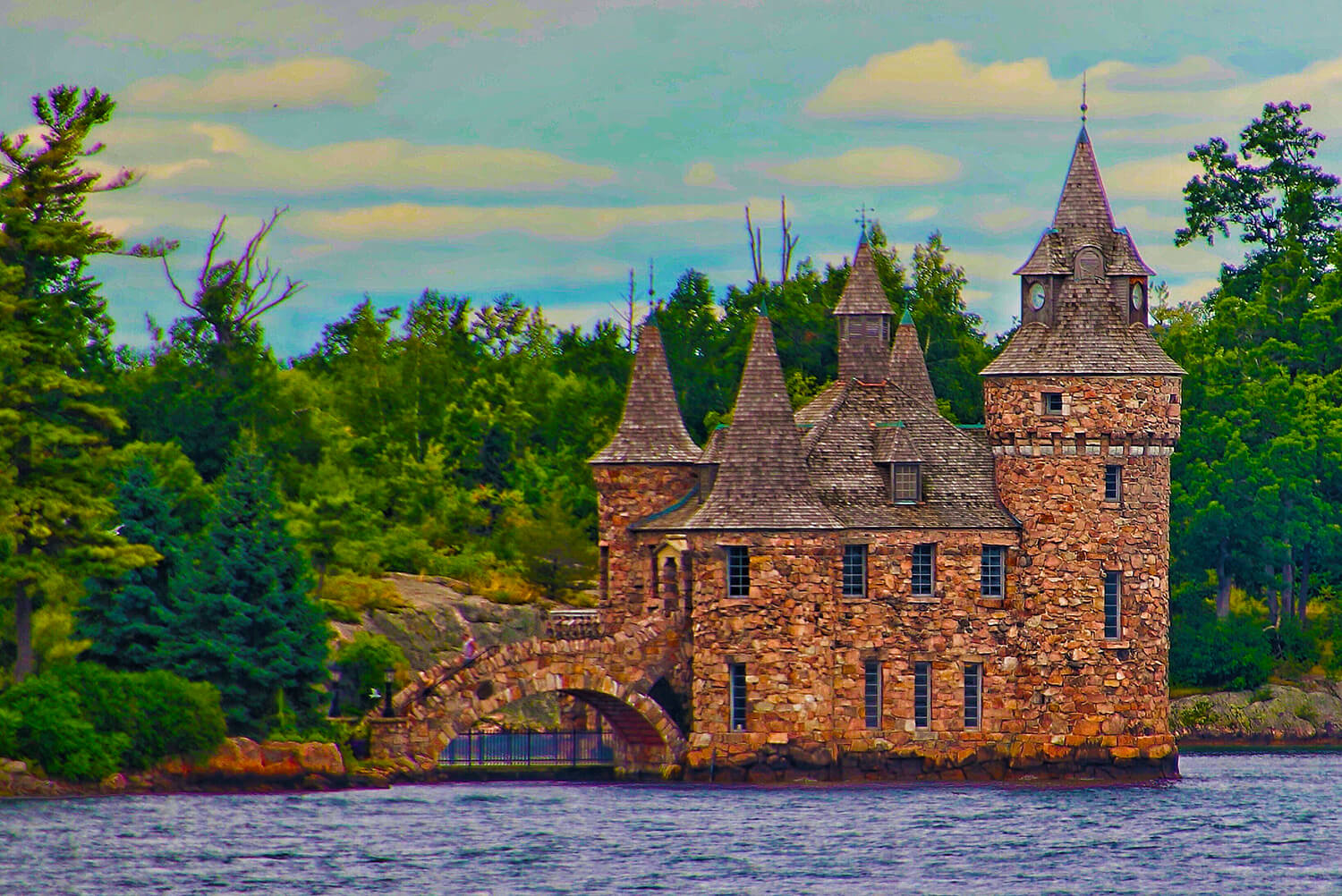1.
Boldt Castle: A Love Story Carved in Stone
When you step off the boat at Heart Island, the first thing you see is Boldt Castle, a German-style Rhine castle right in the middle of the St. Lawrence River. George Boldt, the wealthy hotelier who managed the Waldorf-Astoria in New York City, built it for his beloved wife Louise in the early 1900s. It was meant to be the ultimate Valentine’s gift.
But the story takes a heartbreaking turn. Just before its completion in 1904, Louise died suddenly. George was devastated. He ordered all construction stopped, and never returned to the island. For more than 70 years, the castle sat abandoned, windows boarded up, a ghostly reminder of a love story cut short.
Today, it’s been restored to its former glory. Tourists wander the grand ballroom, marble staircases, and turreted towers. But some swear that on quiet evenings, you can feel the sadness of the unfinished dream. A castle of love and loss in the middle of the Thousand Islands.
2.
Pirates on the St. Lawrence: Fact or Folklore?
The Thousand Islands may look tranquil today, but in the 18th and 19th centuries, they were the perfect hideout for river pirates and smugglers. Dense forests and countless channels gave outlaws cover, and legends say that stolen treasure still lies buried on some of the smaller, nameless islands.
One of the most famous tales is of Bill Johnston, a War of 1812 privateer who turned outlaw after the conflict. Locals called him the “Pirate of the Thousand Islands.” He was known for ambushing British ships and hiding out among the rocky shores. While some considered him a criminal, others saw him as a folk hero, part Robin Hood, part river rogue.
Whether or not the buried treasure stories are true, it’s fun to imagine gold coins under your kayak as you paddle the clear waters. Just keep an eye out: the next island cove might have a secret history of smuggling.
3.
Thousand Island Dressing: A Sauce with a Story
Everyone knows Thousand Island dressing, the tangy, creamy mix that ends up on burgers and Reubens everywhere. But did you know it was born right here?
There are two competing legends. One says that fishing guide George LaLonde’s wife whipped up the dressing on the fly when a fishing party ran out of condiments and the guests loved it so much they spread the word. Another story claims that actress May Irwin, a frequent visitor to the islands, helped popularize the recipe after tasting it at a local dinner.
Whatever the truth, it became a culinary hit when George Boldt (yes, the castle guy) put it on the menu at the Waldorf-Astoria in New York City. From a humble riverside recipe to a worldwide staple that’s the magic of the Thousand Islands.
4.
Singer Castle: Secrets and Hidden Passageways
If Boldt Castle is a love story, Singer Castle is a mystery novel brought to life. Built in 1905 by Frederick Bourne, president of the Singer Sewing Machine Company, the castle on Dark Island looks straight out of a fairy tale.
But inside, it hides secrets: sliding panels, secret passageways, and even a dungeon-like room. Bourne designed it so he could spy on guests through hidden peepholes and move unseen from room to room. No wonder legends of hauntings have followed the place for more than a century.
Today, visitors can tour the castle, or even spend the night if they’re brave. Imagine walking the halls at midnight, knowing there are hidden rooms just behind the walls. It’s history, architecture, and ghost story rolled into one unforgettable stop on a Thousand Islands trip.

